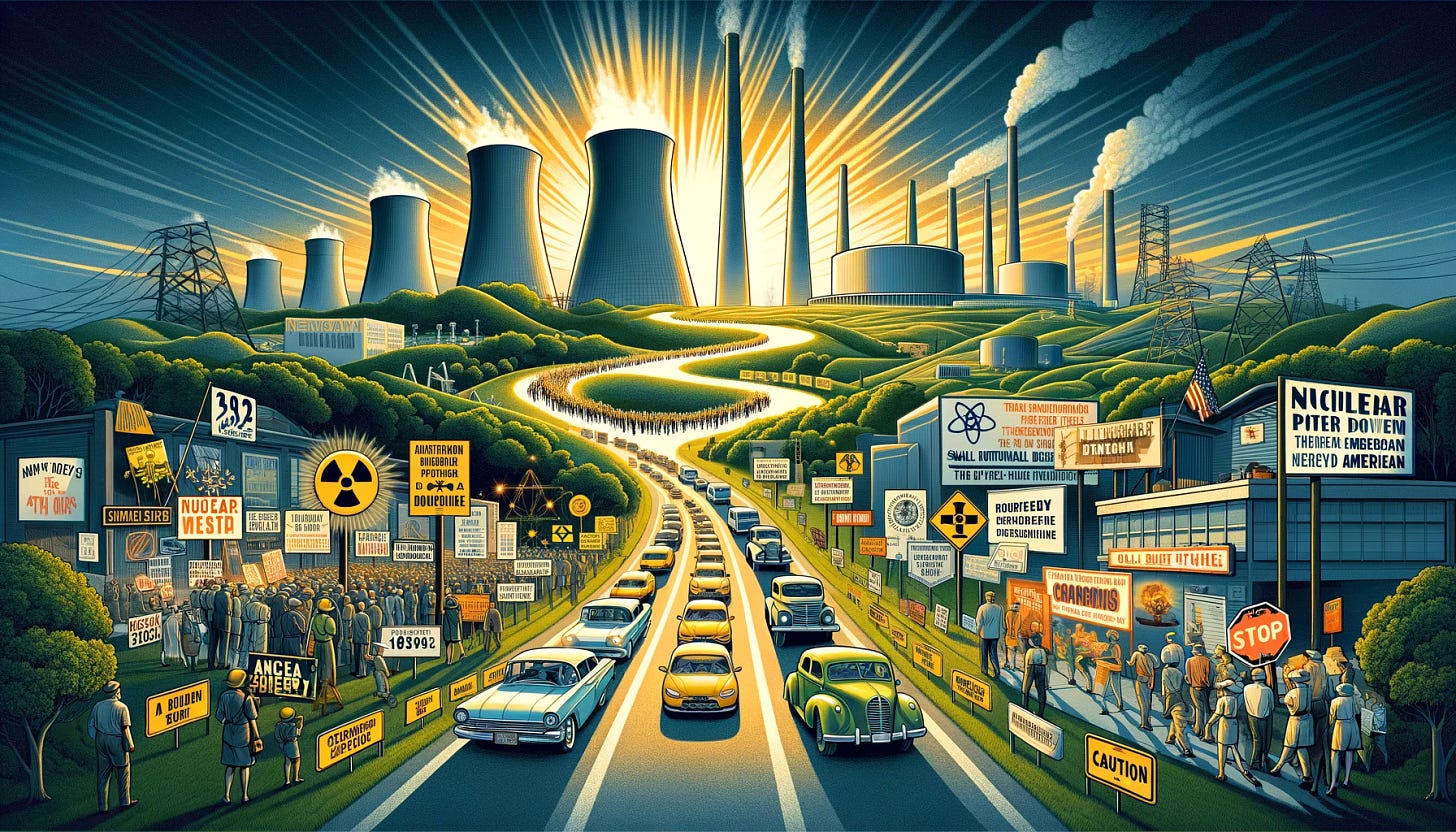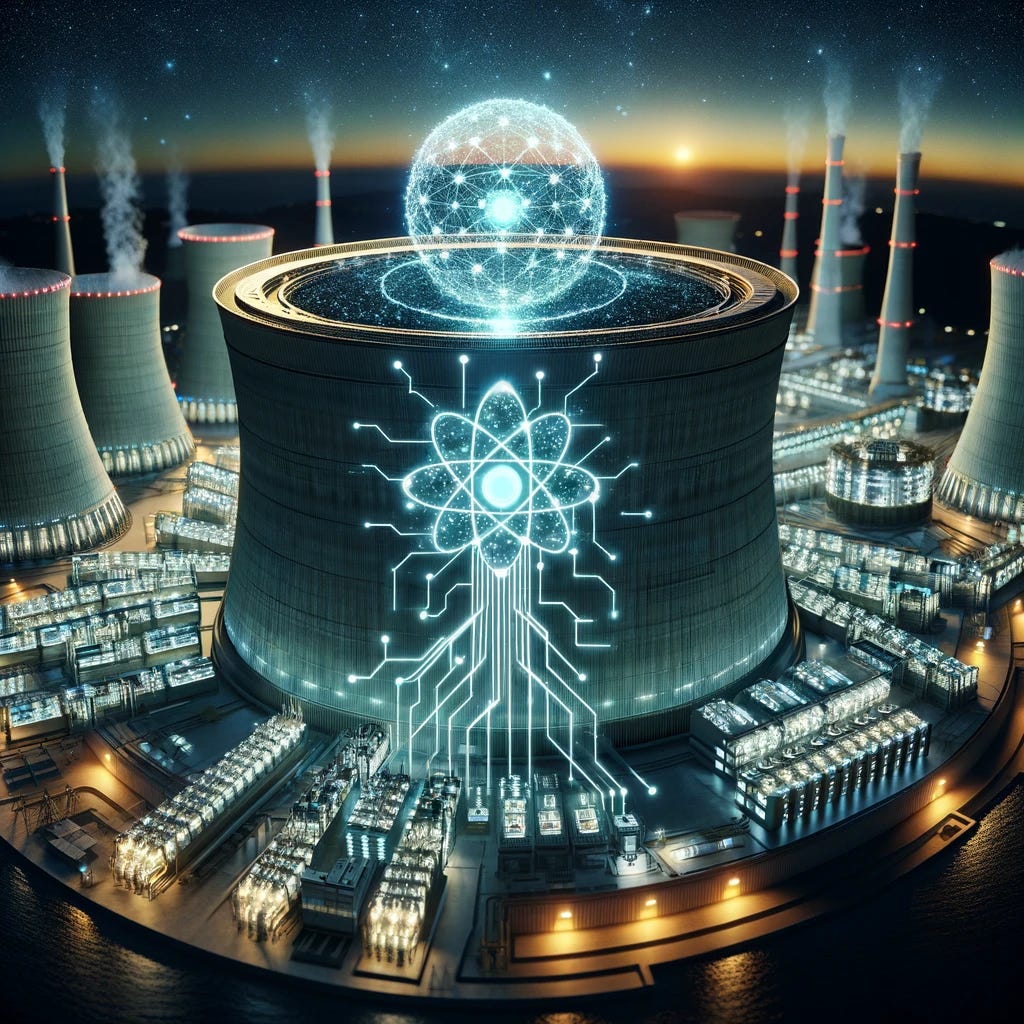https://reason.com/video/2024/03/05/the-political-sabotage-of-nuclear-power/
The Political Sabotage of Nuclear Power
From ReasonTV
Once heralded as the beacon of a clean, abundant energy future, nuclear power's journey in America has been fraught with controversy, regulatory hurdles, and a significant shift in public perception. This article delves into the complex narrative surrounding nuclear energy, exploring its initial promise, the setbacks it faced, and the potential path forward.
The Dawn of the Nuclear Era
In the 1950s, America embraced nuclear power with open arms. Industrialists, politicians, and intellectuals saw it as the future of energy. President Eisenhower's "Atoms for Peace" speech in 1953 marked a pivotal moment, advocating for the global prioritization of nuclear power for peaceful purposes. By the mid-1960s, nuclear reactors began powering hundreds of thousands of homes, with the number expected to rise exponentially.
The Turning Tide
The nuclear sector saw significant growth from 1967 to 1972, with 48 new plants springing to life. However, the incident at Three Mile Island in 1979 marked a turning point. Despite no casualties or lasting environmental harm, the event, coupled with the coincidental release of "The China Syndrome," a film about nuclear dangers, sparked widespread fear and led to a surge in regulations. This regulatory onslaught made it increasingly difficult to innovate or even consider building new reactors.
The Rise of Anti-Nuclear Sentiment
The Three Mile Island incident galvanized anti-nuclear activists, leading to large-scale protests and a significant shift in public and political attitudes towards nuclear energy. This movement, fueled by a conflation of nuclear weapons with nuclear energy, effectively stalled the growth of the nuclear industry in the United States.
The Consequences of Political Opposition
States like New York have seen firsthand the repercussions of shutting down nuclear facilities. The closure of the Indian Point Energy Center, for instance, not only led to a spike in carbon emissions due to increased reliance on natural gas but also highlighted the challenges of transitioning to renewable energy sources like wind and solar, which have yet to prove they can reliably replace nuclear power.
The Future of Nuclear Power
Despite past setbacks, there's a growing recognition of nuclear power's potential in achieving a clean energy future. Innovations in technology, such as small modular reactors, promise simpler, safer, and more cost-effective solutions. Moreover, a shift in political and public perception, partly influenced by the urgent need to address climate change, is slowly rekindling interest in nuclear energy.
As the world grapples with the escalating demands for electricity driven by technological advancements and a push towards electrification, nuclear power stands out as a viable, scalable, and zero-emission source. The long-standing challenges posed by waste management and regulatory barriers remain, but with renewed interest and investment, the nuclear power winter in America might finally be thawing.
The Newest Revolution is Ongoing, AI will accelerate and require more power, more compute. Own your own LLM before it owns you(like google). Accelerate and Amplify your intelligence, learn to ask better questions.
https://www.axios.com/2024/03/12/artificial-intelligence-nuclear-power
The Emergence of Atomic Canyon
A pioneering startup leveraging artificial intelligence (AI) to simplify the intricate federal licensing processes for nuclear developers, signifies a pivotal juncture in the narrative of nuclear energy within the United States. This development not only underscores the integral role of AI in advancing the energy sector but also amplifies the conversation around nuclear power's potential in contribution to large scale compute centers. Amazon just located next to a nuclear power plant to assure cheap reliable electricity for their newest datacenter: https://electrek.co/2024/03/05/amazon-just-bought-a-100-nuclear-powered-data-center/
The Synergy of AI and Nuclear Energy
Atomic Canyon's innovative approach, which employs AI to navigate the vast regulatory landscape dictated by the Nuclear Regulatory Commission (NRC), is a testament to the transformative power of technology in traditional industries. By harnessing the capabilities of AI to sift through the NRC's extensive database, the startup is not only streamlining the approval process for nuclear projects but also setting a precedent for the integration of advanced technologies in regulatory compliance.
The Resurgence of Nuclear Power
The narrative surrounding nuclear power in America has been marked by periods of enthusiastic adoption, marred by controversies and setbacks, notably the Three Mile Island incident. However, as the article "The Political Sabotage of Nuclear Power" from ReasonTV highlights, there's a renewed interest in revisiting nuclear energy as a viable component of the clean energy matrix. The challenges that once stifled the growth of nuclear power, including public perception and regulatory barriers, are being eroded in real time, in light of technological advancements and the pressing need to obtain reliable clean electricity.
AI as a Catalyst for Nuclear Innovation
The role of AI extends beyond regulatory navigation. It is emerging as a critical tool in enhancing all aspects of nuclear energy development, from improving safety protocols to optimizing plant operations and even aiding in the design of next-generation nuclear reactors, including small modular reactors (SMRs). These innovations are not only making nuclear power more accessible but are also addressing unreasonable concerns related to safety and waste management.
The Intersection of Energy Transition and Technological Advancement
The integration of AI into the nuclear sector epitomizes the broader trend of digital transformation across the all human landscapes. As highlighted in the initial article, AI's role in the energy transition is multifaceted, offering solutions from permitting assistance to the development of new materials for energy storage. Many feel it's essential to navigate the dichotomy of AI's energy consumption against the backdrop of decarbonization efforts, a complicated merger of interests that both the energy sector and tech industry are keen to address.
The Path Forward
As Atomic Canyon drives forward the amalgamation of AI and nuclear energy, the path to a cheap and abundant energy future becomes increasingly tangible. The acknowledgment of AI's potential by industry leaders and the growing acceptance of nuclear power's role in the clean energy transition signal a shift towards a more integrated, technologically advanced approach to overcoming America’s energy debacles.
In light of these insights, this article serves as a call to action for everyone across the world to embrace the potential of AI and nuclear power as catalysts for change, paving the way for a future where long lived, reliable, and cheap energy is not just an aspiration but a reality.
I have developed: Alvin a GPT4 powered Nuclear Physics and Design Assistant. He avoids regulatory and policy (mostly) and focus on the pure science and technology of Fission energy. He’s got several Molten Salt Reactor Documents he refers to which aid his knowledge and capabilities.
The future is now…





